Isfahan – Half of The World
Isfahan – Half of The World
Isfahan
Isfahan also known as Esfahan is a city in central Iran, south of Tehran and is the capital of Isfahan Province. The Persians call it Nesf-e Jahan, meaning “Half of The World”. Due to its beautiful hand-painted tiling and magnificent public square, it is considered to be one of the most beautiful cities in the world. Isfahan has a population of approximately 1.6 million, making it the third largest city in Iran after Tehran and Mashhad, but was once one of the largest cities in the world. An ancient town and capital of Persia from 1598 to 1722, it was long noted for its fine carpets and silver filigree. Today, textile and steel mills take their place. Its architecture, tree-lined boulevards and relaxed pace make it one of the highlights of Iran.
Isfahan Safavid- Isfahan history
The city’s splendor began with the reign of the Safavid ruler Shah Abbas I (r. 1587-1629), who made Isfahan his capital and built the huge bazaar, which was strategically located on the Silk Road. Under Abbas, Isfahan enjoyed great prosperity and flourished as a center of art, architecture and commerce (based on carpet, textile and silk production), with a reputation as one of the greatest and most beautiful towns in the whole of Asia.

Isfahan – Naqhse Jahan
![]()
TripAdvisor :
Isfahan Iran
Among the cities of Iran, Isfahan is like a piece of jewelry that despite the historical fluctuations in the area has still retained its luster and glory throughout the centuries. The city is so vibrant that it seems as if it has been born today and yet it is so original that it looks as though it has always existed. The city’s rich culture and beautiful nature are in such perfect harmony that one seems to be a reflection of the other. Isfahan is an ultimate expression of the Iranian-Islamic Culture.
Watch in YouTube
Isfahan population
Isfahan has a population of approximately 1.6 million, making it the third largest city in Iran after Tehran and Mashhad, but was once one of the largest cities in the world.
![]()
TripAdvisor :
Isfahan attractions
Isfahan: A Museum Where People Live
With its old history and numerous monuments, Isfahan is an exemplary city in the world. According to the French author, Andre Malraux, only Florence and Peking are comparable to Isfahan. The historical monuments of Isfahan comprise a collection of the finest examples of the various styles of Persian architecture developed throughout a period of thousand years and more. The quality and quantity of these works of art are great and they are masterpieces of the post-Islamic Iranian architecture. Among the historical attractions of Isfahan various types of domes, tile works, plaster works, frescos wall paintings and calligraphies can be named. These works reveal the religious beliefs of their creators and fascinate the visitors so greatly that they feel as though they have been taken back to the ages of the artists and find themselves in a world replete with light and elegance.
- Naqsh-e Jahan Square also known as shah square or imam square-1602. The square contains two mosques, a palace, and the bazaar. It is the largest historic public square in the world after Tiananmen Square in Beijing and it is one of UNESCO’s World Heritage Sites and it is surrounded by buildings from the Safavid era. This a very popular place for locals to picnic on Friday and holiday evenings.
- Meydan Kohne (Kohne Square)
- Shahshahan Square
- Chaharbagh Boulevard – 1596, dating from the Safavid era, the avenue is the most historically famous in all of Persia.
- Chaharbagh-e-khajou Boulevard
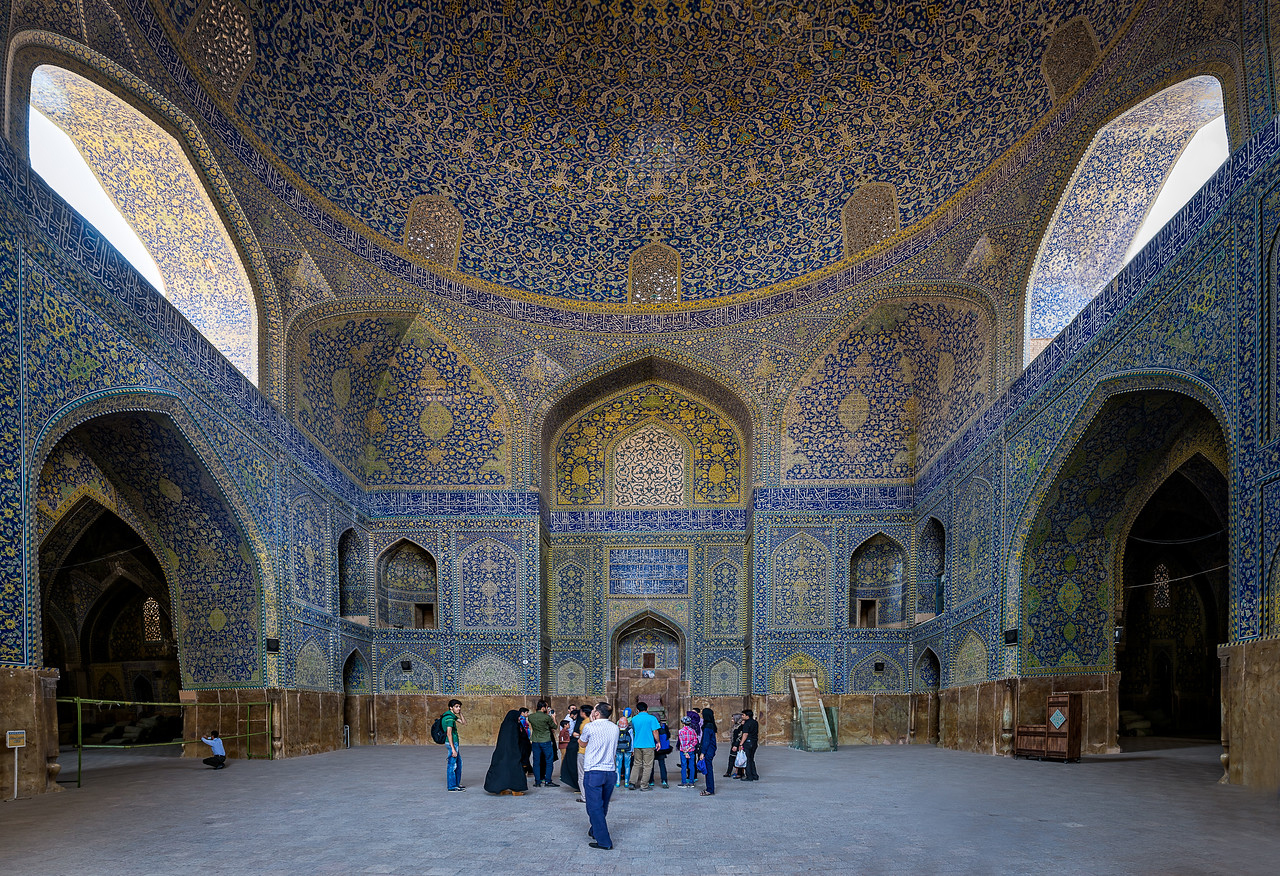
Isfahan: A World of Art
Isfahan is called the city of Iranian handicraft and traditional arts. These works of art comprise a major portion of Iran’s exports, particularly to Europe. The contemporary traditional arts and handicrafts of Isfahan are in fact a continuance of the Safavid Art pursued by the modern Iran craftsmen. Their artistic works are appreciated by Iranians and non-Iranians alike, and play a pivotal role in exports from Isfahan. Carpet weaving, engraving, miniature painting, Moarragh, tile art, brocade, calico work and enamelwork are among the most prominent works of art in Isfahan. The contemporary artists of Isfahan have made new innovations in recent years in the areas of miniature painting, tile making and engraving. Isfahan also has an age-old musical tradition. Today, most Iranian musicians speak Persian with an Isfahani accent.
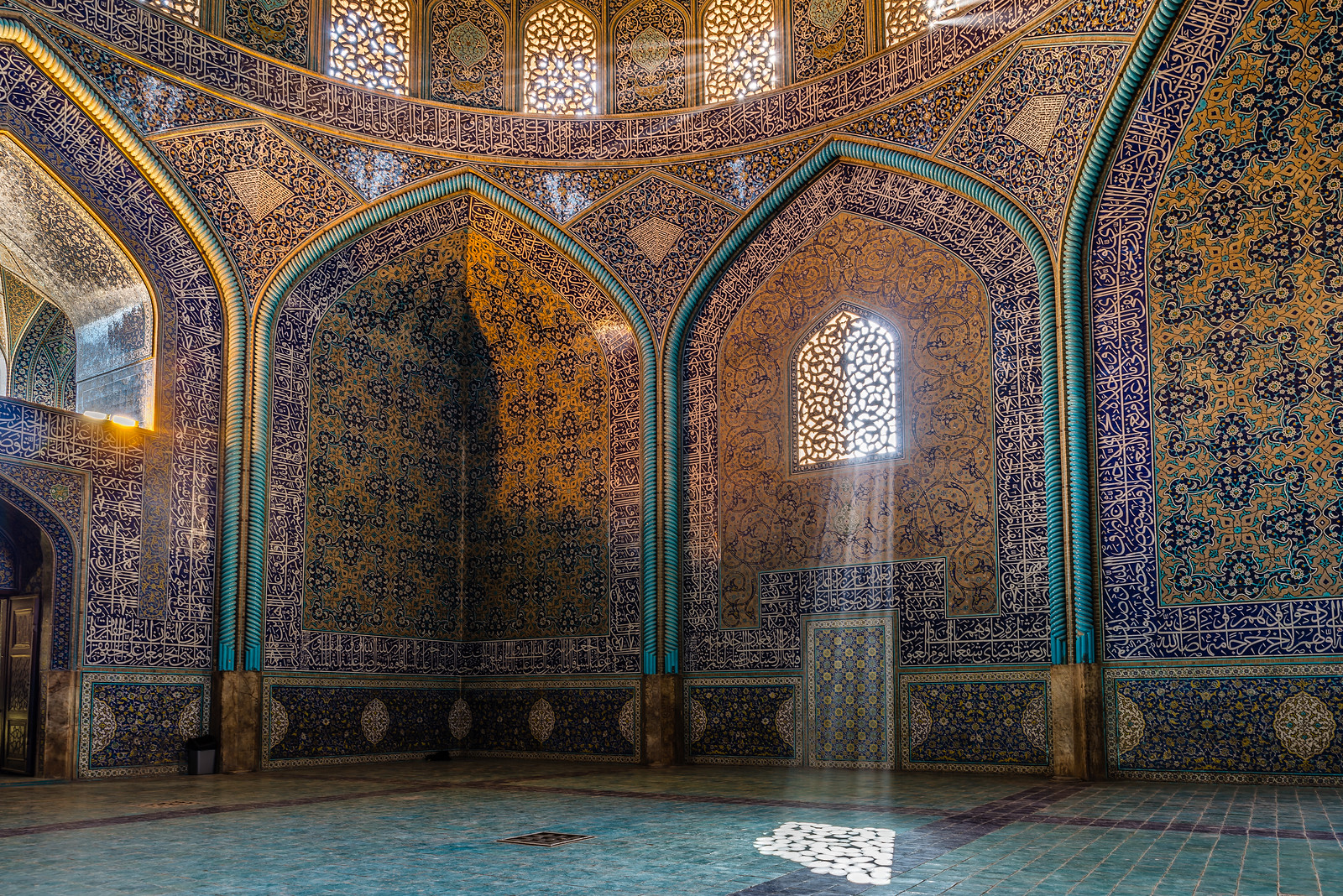
Watch in YouTube
Isfahan handicrafts
City of Isfahan with long history has many handicrafts which represents impressive art of Iranians.
The main handicrafts of Isfahan include:
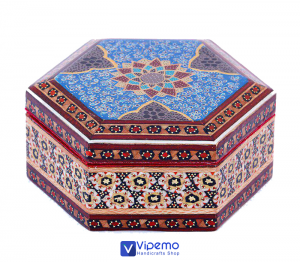 Khatam Kari (inlay)
Khatam Kari (inlay)
Khātam (Persian: خاتم) is an ancient Persian technique of inlaying. It is a version of marquetry where art forms are made by decorating the surface of wooden articles with delicate pieces of wood, bone and metal precisely-cut intricate geometric patterns. Khatam-Kari (Persian: خاتمکاری) or khatam-bandi (Persian: خاتمبندی) refers to the art of crafting a khatam. Common materials used in the construction of inlaid articles are gold, silver, brass, aluminum and twisted wire.
You can buy Khatam Kari in Vipemo
Khatam Kari
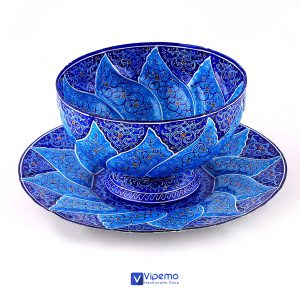 Minakari – Enameling
Minakari – Enameling
Meenakari (Minakari) is the art of colouring and ornamenting the surface of metals by fusing over brilliant colors that are decorated in an intricate design. Mina is the feminine form of Minoo in Persian, meaning heaven. Mina refers to the Azure color of heaven. Enamel working and decorating metals with colorful and baked coats is one of the distinguished courses of art in Isfahan. Mina is defined as some sort of glass-like colored coat which can be stabilized by heat on different metals particularly copper. Although this course is of abundant use industrially for producing metal and hygienic dishes, it has been paid high attention by painters, goldsmiths and metal engravers since long times ago. In the world, it is categorized into three kinds being: Painting enamel, Charkhaneh or chess like enamel, Cavity enamel.
You can buy MinaKari in Vipemo
Mina Kari
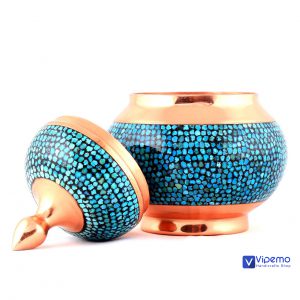 Turquoise inlaying
Turquoise inlaying
Firooze Koobi (Turquoise inlaying) is an old Iranian process of making wares and jewelry by implanting small pieces of turquoise stone in the surface of metals such as copper, brass, silver or bronze.
The product is one of the most beautiful Iranian artworks dating back to at least half a century ago. Iranian artisans use turquoise in various forms of art including calligraphy and handicrafts.
You can buy Turquoise inlaying in Vipemo
Firooze Koobi
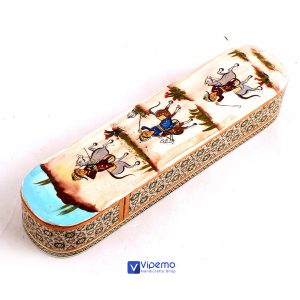 Miniature
Miniature
Miniature Painting or Miniator is a small handmade oil painting on paper, whether a book illustration or more importantly on a piece of camel bone. The bright and pure coloring of the Persian miniature is one of its most striking features. The workshop tradition and division of labor within both an individual miniature and a book, as described above, distinguish the attribution of paintings. Because of the nature of the works, literary and historical references to artists, even if they are relied upon, usually do not enable specific paintings to be identified, though there are exceptions.
You can buy Turquoise inlaying in Vipemo
Isfahan Rugs (Isfahan Carpet)
Isfahan rugs are of an excellent quality, using soft kork wool (often with silk details or foundations) and a very tightly woven pile. The rugs woven in this city are perhaps the best and most valuable in the world as a whole. The most popular design is a central medallion surrounded by vines or flowers which are usually red, blue or indigo on an ivory background. Other popular design elements and motifs include vase, garden and tree of life designs, Shah Abbasi motifs, and pictorial pieces. The inspiration for the rugs’ design comes from traditional motifs and patterns, nature, poetry and the great poets, but also from the rich architectural history of the city; the famous mosque of Shah Lutf Allah being a particular muse for many of the rugs created in this great city.

Isfahan Mosques
- Imam Mosque (Shah Mosque before Iran’s Revolution), In Naghsh-i Jahan Square. Built during the Safavid period, it is an excellent example of Islamic architecture of Iran, and regarded as one of the masterpieces of Persian Architecture. It is registered as a UNESCO World Heritage Site. Its splendor is mainly due to the beauty of its seven-colour mosaic tiles and calligraphic inscriptions.
- Sheikh Lotf Allah Mosque– one of the architectural masterpieces of Safavid Iranian architecture, this mosque is the most beautiful in Iran. Built-in 1602 by Shah Abbas I.= and designed by his chief architect, Sheikh Bahai. It was a private mosque for the royal family and therefore it does not have any minarets. There is a tunnel from the mosque to the Royal Palace, across the square.
- Hakim Mosque – one of the oldest mosques in Isfahan. Built by Shah Abbas II between 1656 and 1662. Located on the site of a 10th-century mosque. The portal was covered in mud until it was discovered in 1956.
- Masjed-e Jāmé of Isfahan. Started in AD842, this is the first Islamic building to adapt the four-courtyard layout of Sassanid palaces.

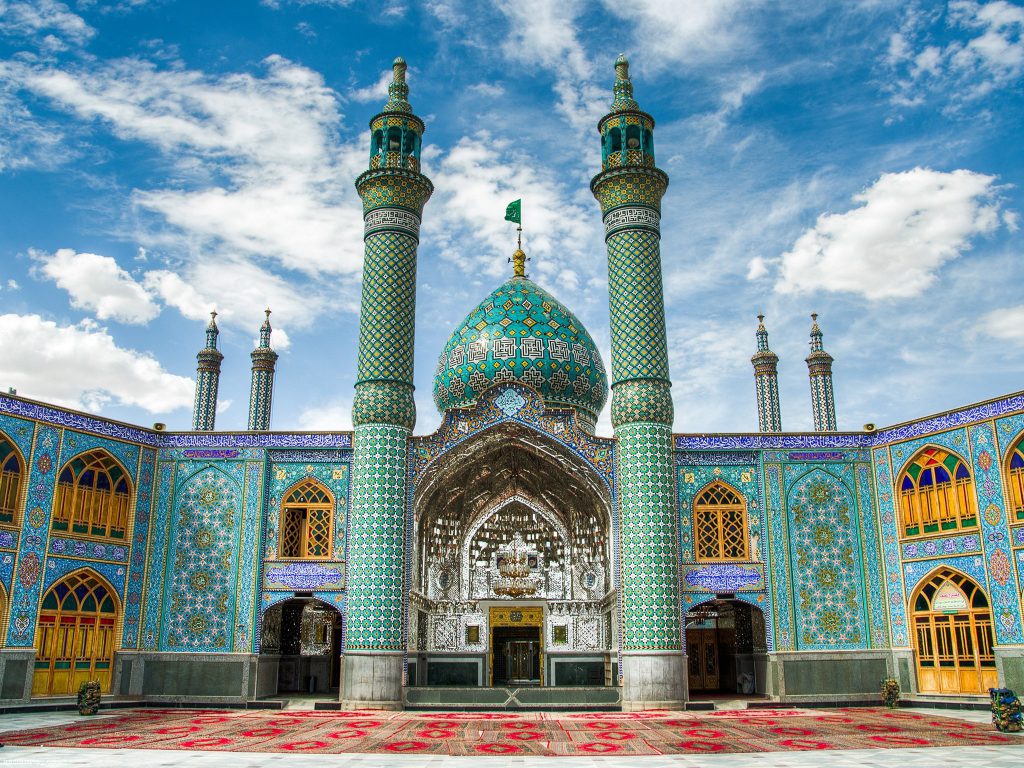
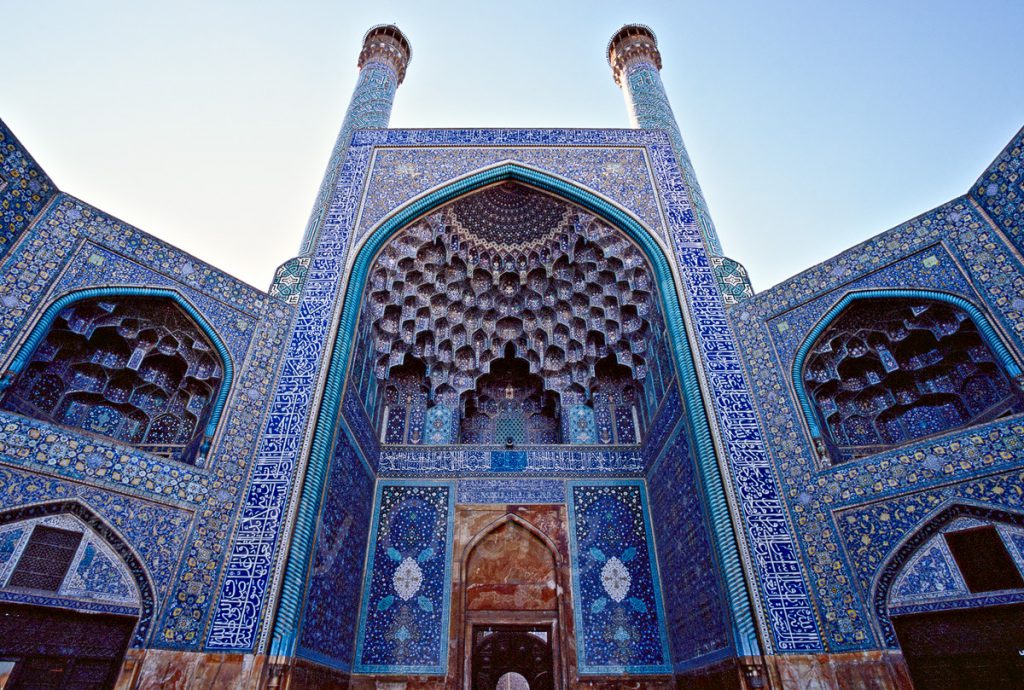
Isfahan Palaces
- Ālī Qāpū(The Royal Palace) – Early 17th Century. It is forty-eight meters high and there are seven floors, each accessible by a difficult spiral staircase. In the sixth-floor music room, deep circular niches are found in the walls, having not only aesthetic value but also acoustic. It is rich in naturalistic wall paintings by Reza Abbassi, the court painter of Shah Abbas I, and his pupils. There are floral, animal and bird motifs.
- Talar Ashraf (The Palace of Ashraf) – 1650.
- Hasht Behesht (The Palace of Eight Paradises) – 1669: Reportedly built for residence purposes of the King’s harem.
- Chehel Sotoun (The Palace of forty columns) – 1647: It is called Palace of forty columns, as there are many columns, and in Iranian, 40 means many. Incidentally, there are twenty columns, and these are reflected in the pool in front, which might also account for its name. The function of this palace was for holding religious-national ceremonies and royal festivals and for receiving royal ambassadors and guests.
Isfahan Bridges
Walk along the Zayanderud River beside the ancient bridges. You see many locals doing this every day. However, as a result of a drought and badly planned dam, there is usually no water in the river.
- Pol-e Shahrestan (The Shahrestan Bridge) – 11th Century. It is one of the oldest surviving bridges in Iran, built in the 14th Century (C.E.).
- Pol-e Khaju (Khaju Bridge) – 1650. It is the finest bridge in the province of Esfahan. It was built by the Persian Safavid king, Shah Abbas II around 1650 C.E. This structure originally was ornated with artistic tile works and paintings serving as a teahouse
- Si-o-Seh Pol (The Bridge of 33 Arches) – 1602. It is highly ranked as being one of the most famous examples of Safavid bridge design.
- Pol-e-Joui or Choobi(Joui bridge)It is one of Isfahan’s oldest bridges and was built in 1665, during the Safavid era.
- Pol-e-Maarnaan (Maarnaan Bridge)

Churches and Cathedrals
- Vank Cathedral (The Church of the Saintly Sisters) – 17th century. The interior is covered with fine paintings and gilded carvings and includes a wainscot of rich tile work. The delicately blue and gold painted central dome depicts the Biblical story of the creation of the world and man’s expulsion from Eden. Right above the entrance, there is an interesting fresco of heaven and hell with black and brown devils slaughtering white naked people who obviously sinned. To heaven go well dressed pious people with candles. Entrance to the compound on which there is also a museum: IRR200,000. Good value compared to what you pay at other sites.
- Kelisaye maryam (maryam church)
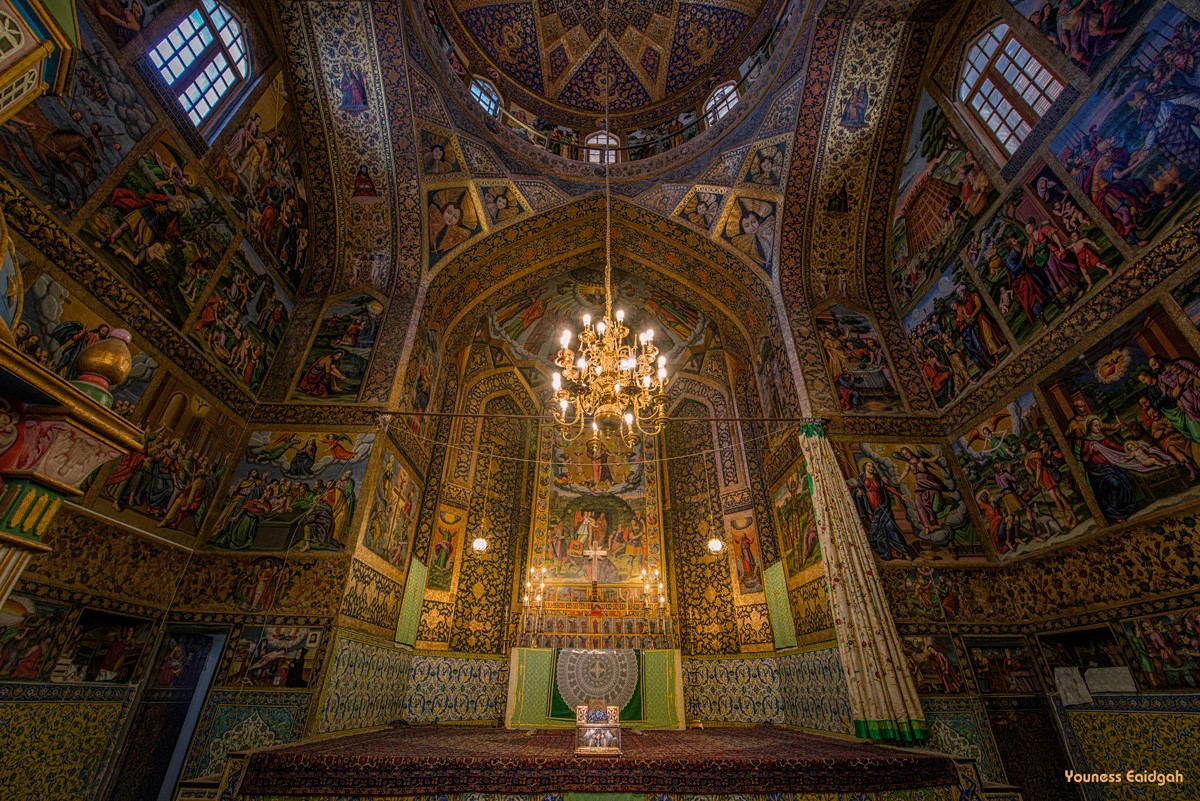
Isfahan Hotel
Abbasi Hotel – 5 Star
Facilities
- Free parking
- Free internet
- Pool
- Free breakfast
- Airport transportation
- Business Centre with Internet Access
- Conference facilities
- Concierge
- Show more
- Room features
- Non-smoking rooms
- Suites
- Family rooms
- Air conditioning
- Private balcony
- Room service
- Minibar
- Flatscreen TV
Phone: +983132226010
Website: www.abbasihotel.ir
Kowsar Hotel – 5 Star
Facilities
- Free parking
- Free High Speed Internet (WiFi)
- Pool
- Fitness Centre with Gym / Workout Room
- Free breakfast
- Business Centre with Internet Access
- Conference facilities
- Concierge
- Show more
- Room features
- Non-smoking rooms
- Suites
- Family rooms
- Smoking rooms available
- Air conditioning
- Room service
- Minibar
- Flatscreen TV
Phone: +983136240230
Safir Hotel – 4 Star
Facilities
- Free parking
- Free High Speed Internet (WiFi)
- Pool
- Fitness Centre with Gym / Workout Room
- Free breakfast
- Airport transportation
- Meeting rooms
- Fax / photocopying
- Show more
- Room features
- Non-smoking rooms
- Suites
- Air conditioning
- Housekeeping
- Room service
- Safe
- Kitchenette
- Flatscreen TV
Phone: +983132222640
Piroozy Hotel
Facilities
- Free parking
- Free High Speed Internet (WiFi)
- Free breakfast
- Conference facilities
- Banquet room
- Concierge
- Non-smoking hotel
- Dry cleaning
- Room features
- Non-smoking rooms
- Suites
- Family rooms
- Air conditioning
- Room service
- Minibar
- Refrigerator
- Flatscreen TV
Phone: +983132214354
Website: piroozyhotel.com
Email: info@piroozyhotel.com
Address: Chahar Bagh Paeen Street, Isfahan, Iran
You can find book Hotels in Isfahan Here: https://surfiran.com/best-5-4-star-hotels-isfahan-iran
![]()
TripAdvisor :
Watch in YouTube
![]()
TRIP ADVISOR
Forums
Restaurant
Things to do


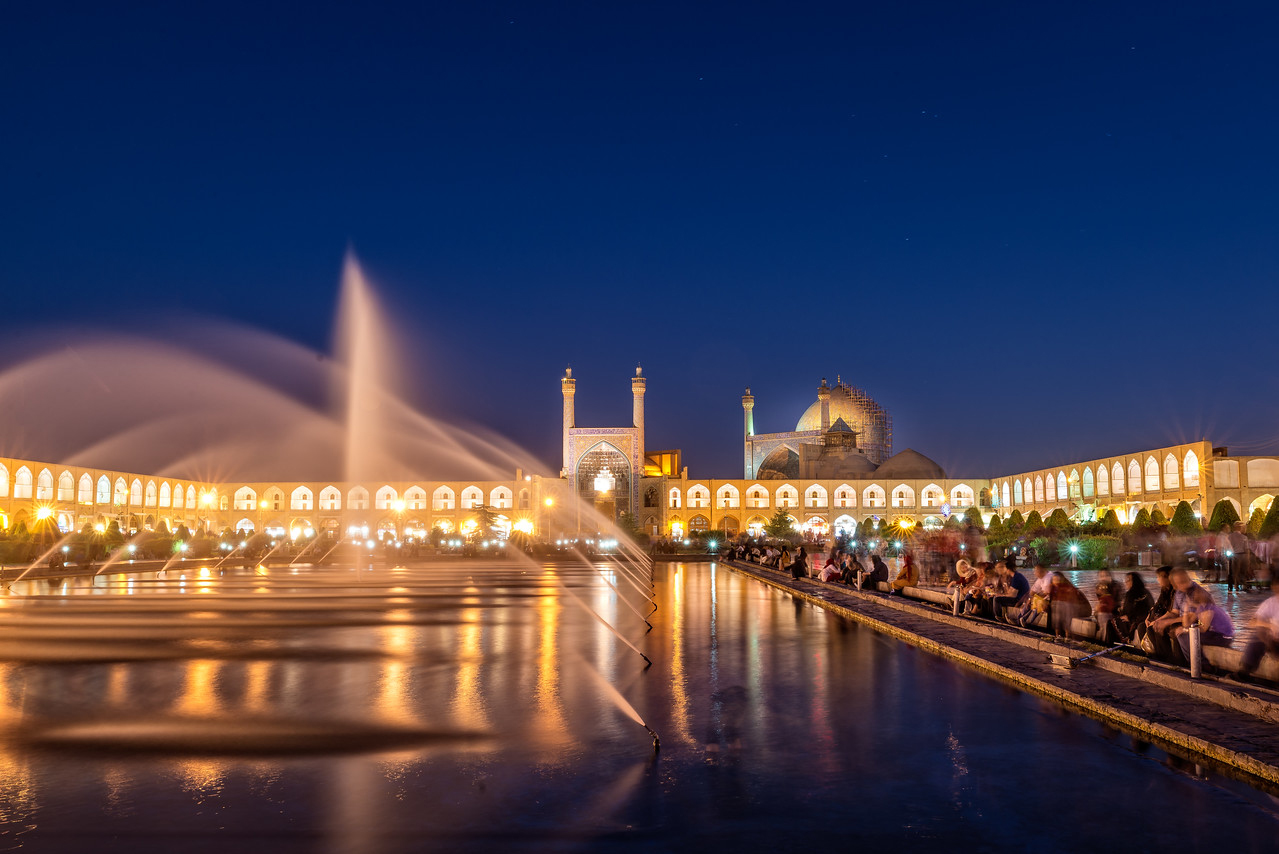
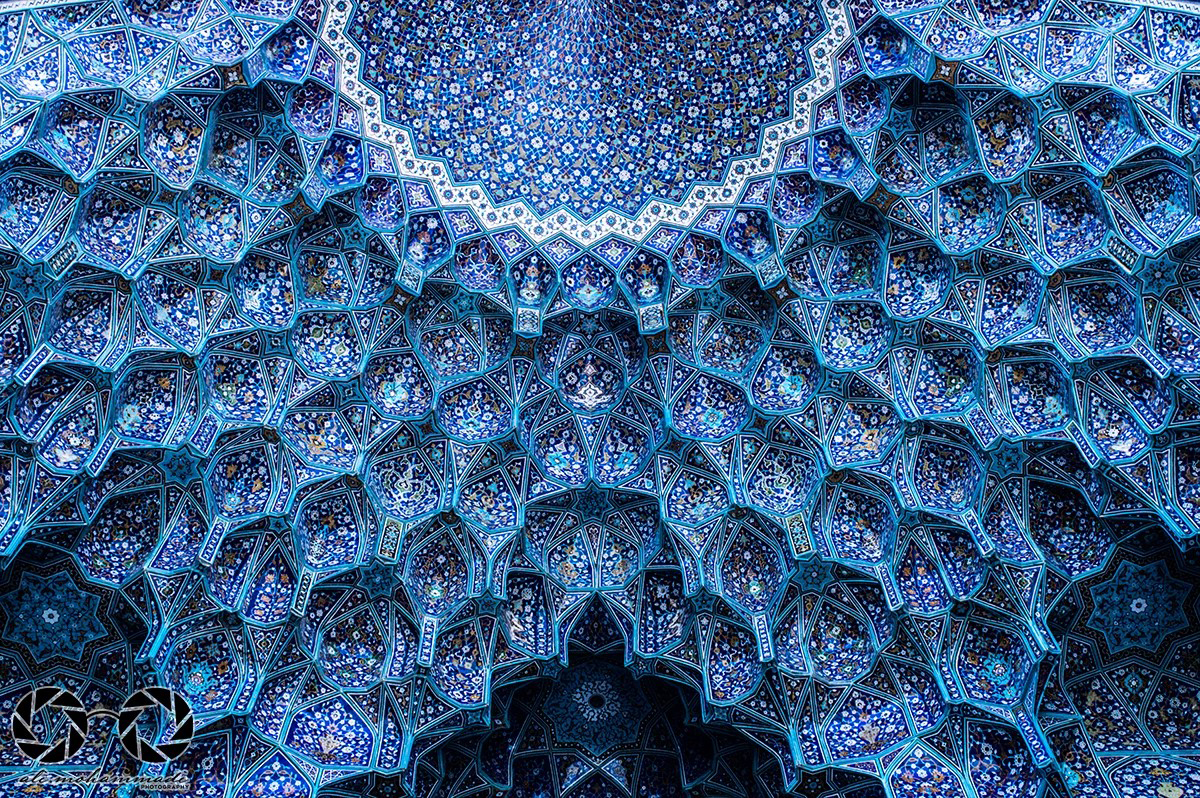
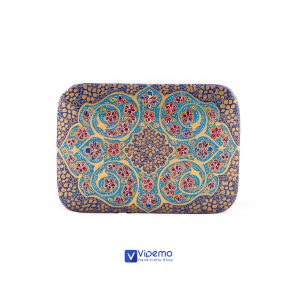
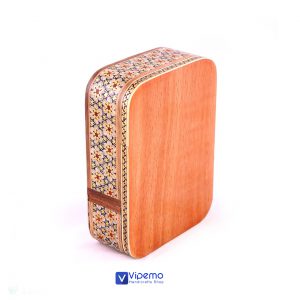
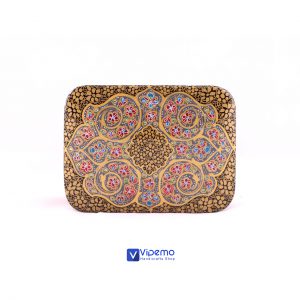
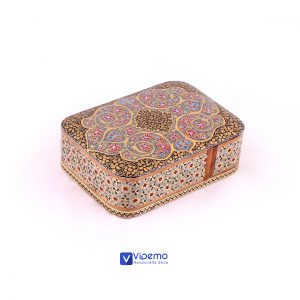
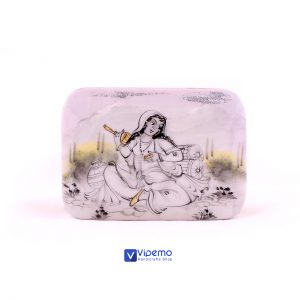
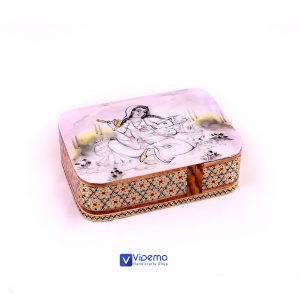
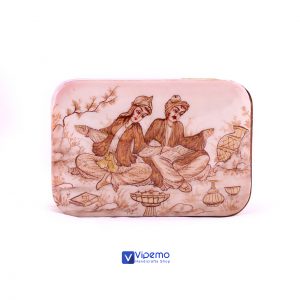
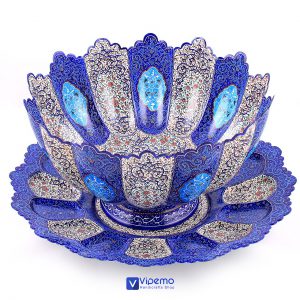
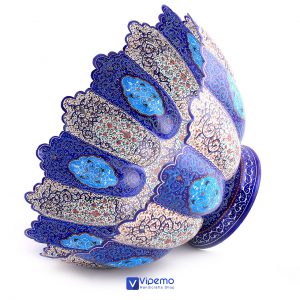
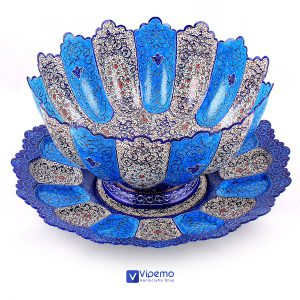
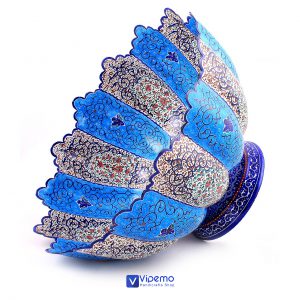
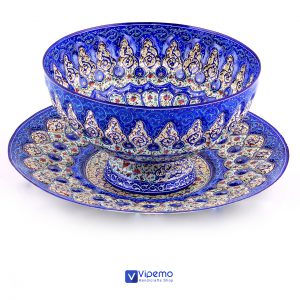
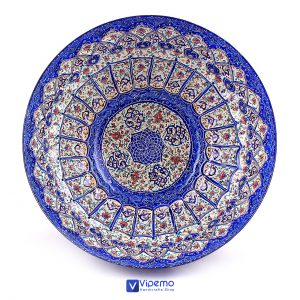
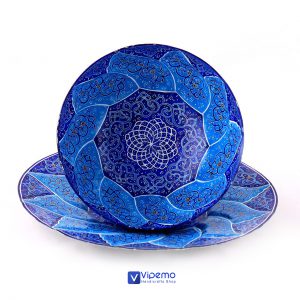

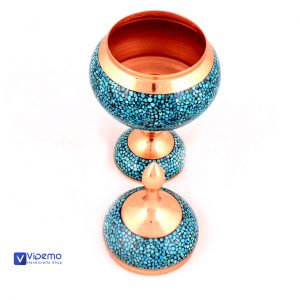


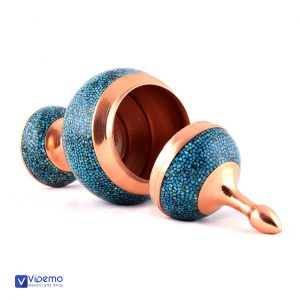
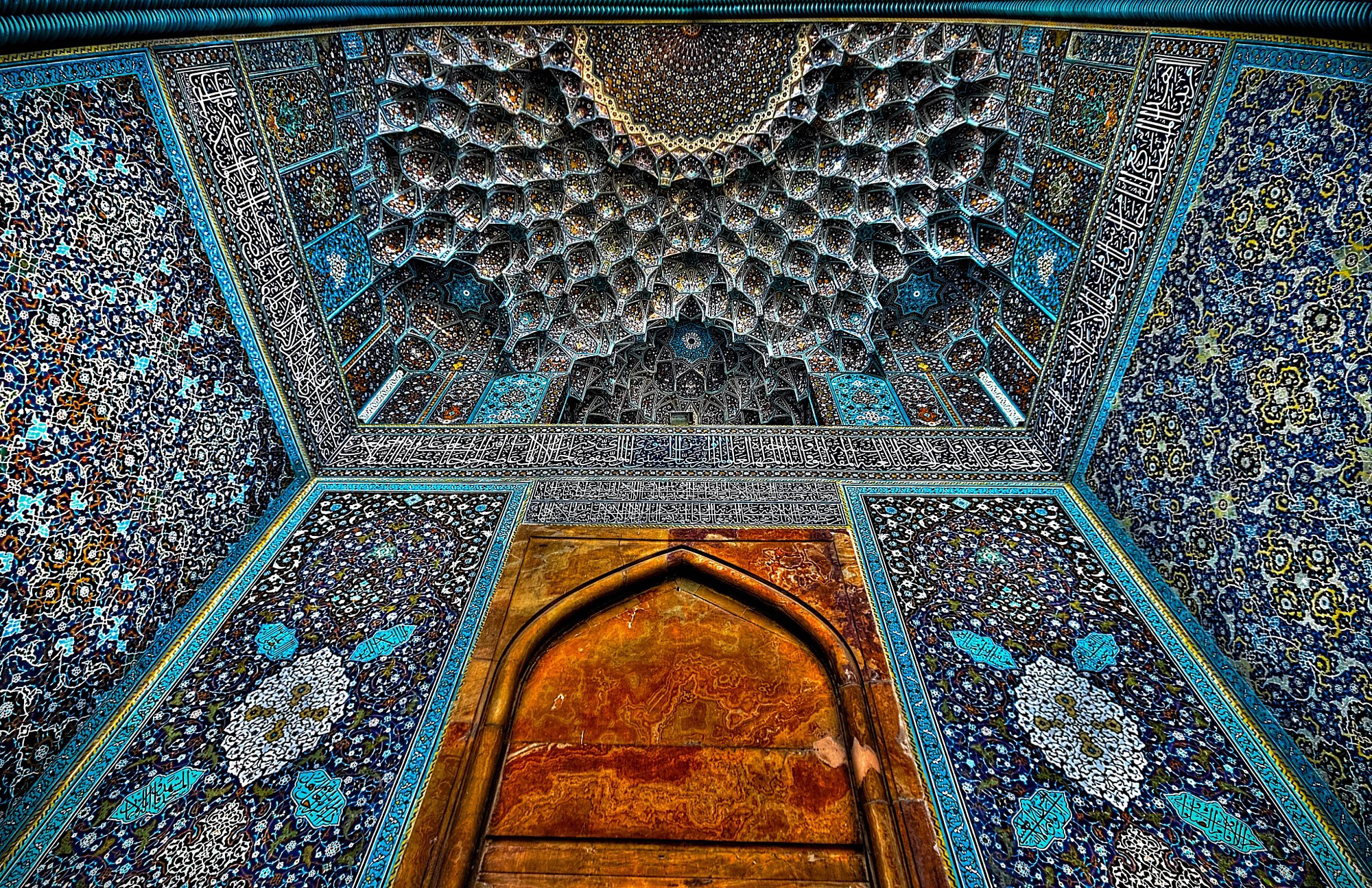
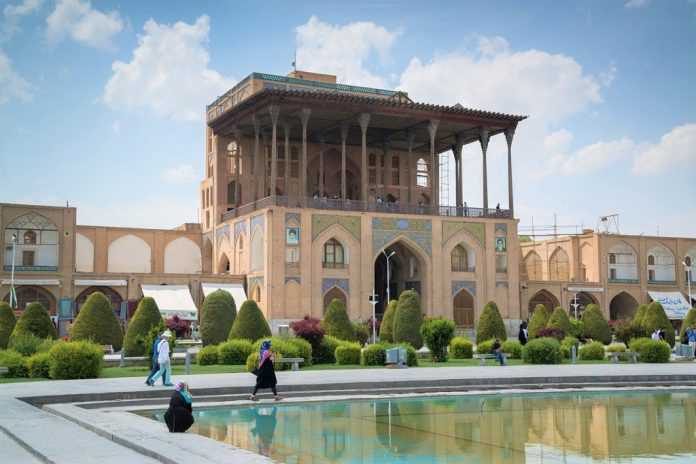
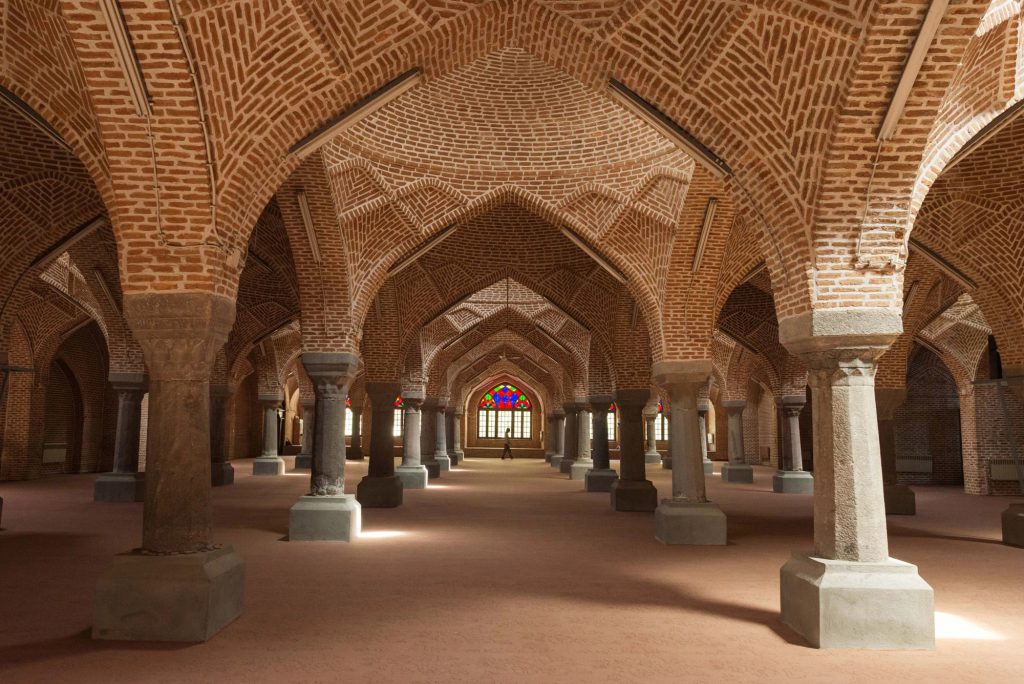

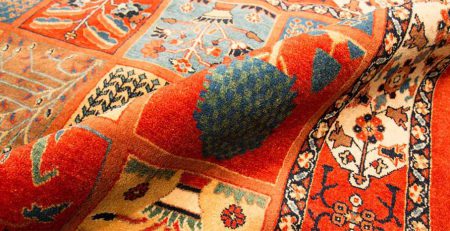
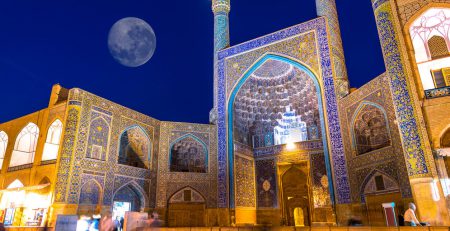
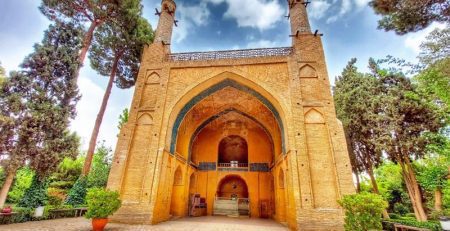
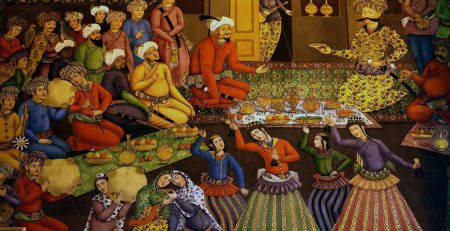
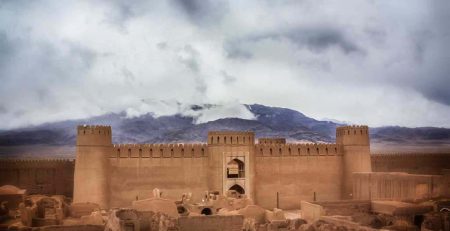
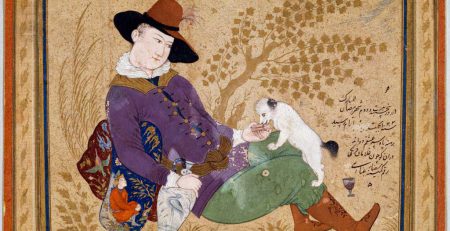
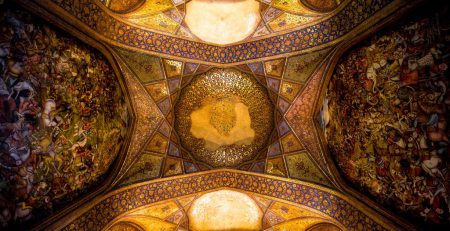
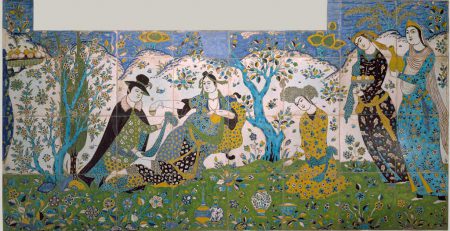
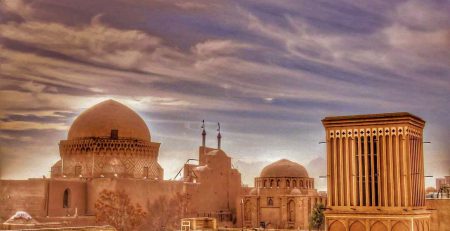
Comments (2)
[…] the growth of Tehran to a major city. In 1766 Agha Mohammad Khan (1742-1797) moved the capital from Isfahan to Tehran and made Tehran the center of power in […]
[…] allocated to the handicrafts market, while the upper floor is planned to accommodate the museum of Isfahan‘s […]